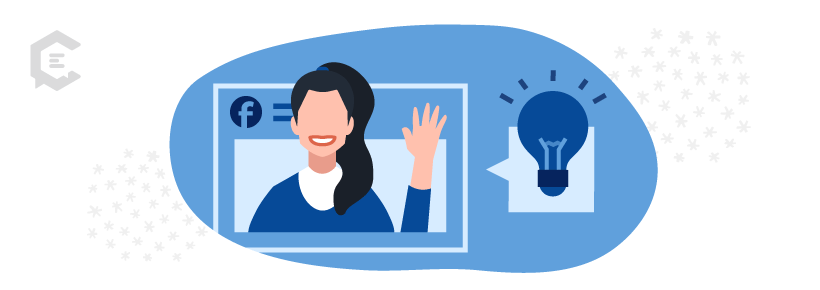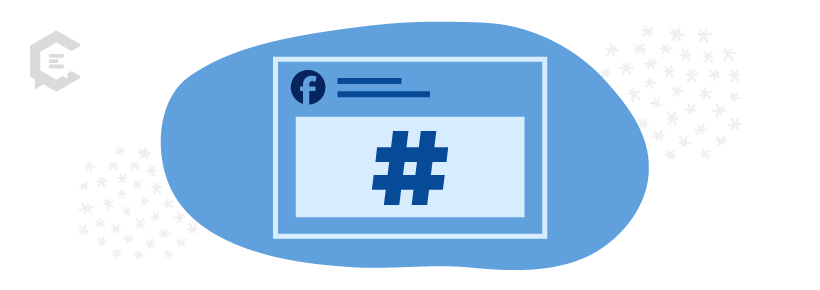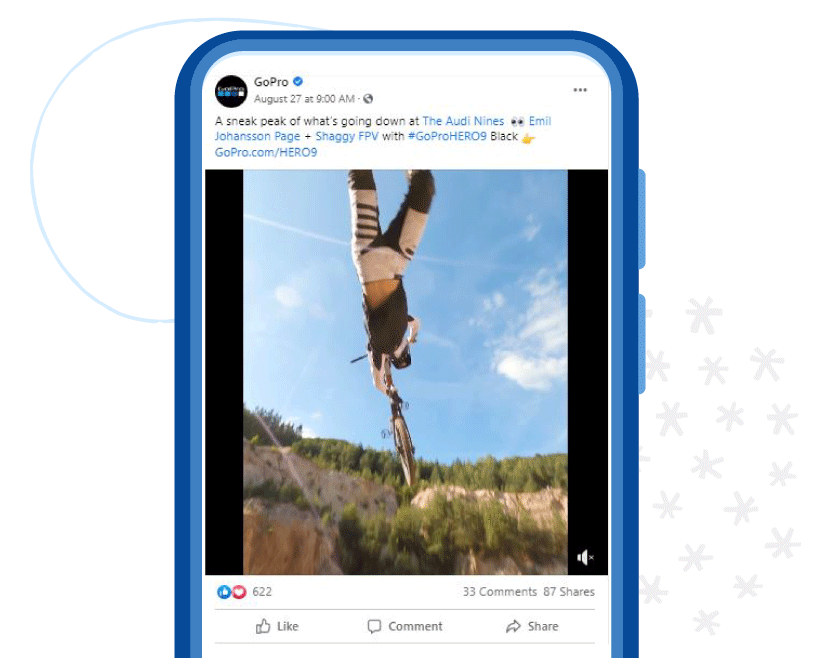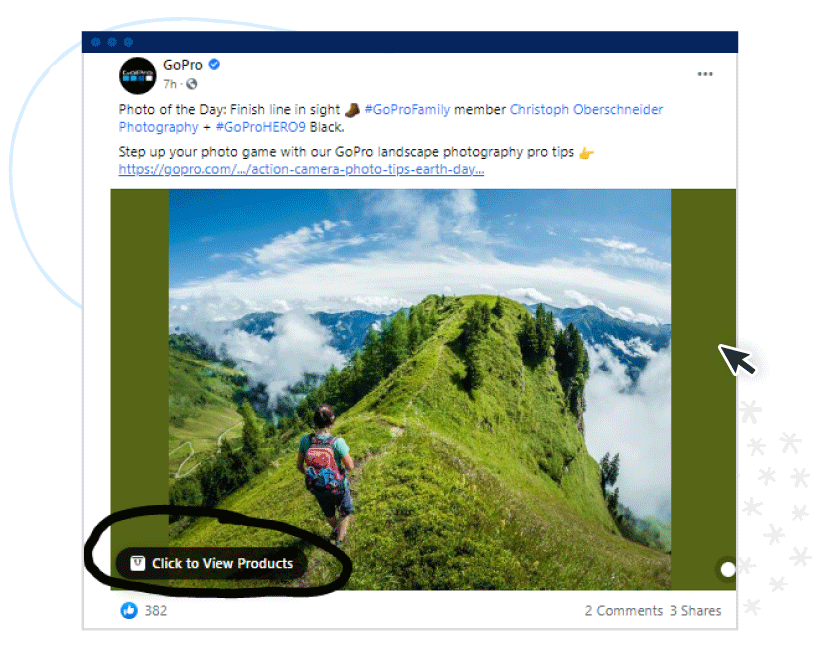During our hashtag series, we’ve discussed the history of hashtags and the effectiveness of using them in your content on various platforms for amplified visibility, organic discovery, and to align with other like-minded users.
Although hashtags are purposeful on Instagram, Twitter, and Pinterest, many have a burning question in their minds: Do hashtags matter on Facebook? The short answer is yes!
Similar to the others, hashtags on Facebook are great for adding reach to your content organically. However, knowing Facebook hashtag best practices will help ensure you’re leveraging their power and not adversely impacting your content by annoying or repelling your audience.
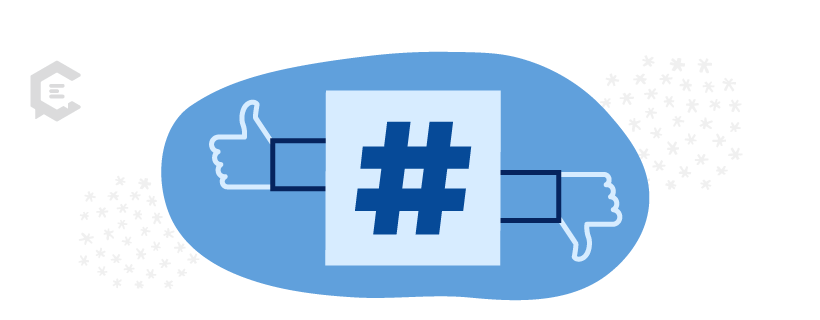
6 Facebook hashtag best practices
Here are crucial Facebook hashtag best practices to ensure your efforts are impactful:
1. Research popular hashtags on the platform.
Before you begin using hashtags on the platform, it’s crucial to check them first to ensure the current content isn’t damaging to the brand or irrelevant. To check your hashtags, merely add them to the Facebook search bar.
Once the content populates, review how consumers are currently using the hashtag, and in what context.
Additionally, once your posts go live, click them to review the content associated with the hashtag once more. As a reminder, hashtags are active, real-time content lanes. When your posts publish on the platform, engage with your hashtags to leverage the relatable connection.
2. Don’t treat your hashtag strategy like Instagram.
Although Facebook owns Instagram, they have no desire to be the same. They may integrate similar features and tools, but Facebook is clear on why users go to each platform respectively.
Facebook is about creating and building community, while Instagram commits to building a powerful storytelling visual platform.
The worst strategy for your hashtags and content overall is to have “matching luggage” with the list of hashtags from Instagram. It can be off-putting to Facebook users while driving fans that follow both platforms to ignore your updates on Facebook.
Treat the platforms differently because they are different.
3. Consider adding or refreshing hashtags to old yet relevant posts.
With consideration to the engagement algorithm on the platform, one great strategy involves adding or restoring your hashtags on content that’s no longer recognized as an active post but has relevancy to your brand and audience. This is considered “bumping” your post back up in the algorithm.
Have you noticed that if someone leaves a comment on an old post, your friends will begin engaging with that content again as if it’s new? That initial comment bumped it back up for the algorithm, deeming the content still necessary.
Editing your post to have new hashtags will have the same effect on the post, making this one of the essential Facebook hashtag best practices to follow.
4. Don’t overdo it with hashtags.
Instagram’s ideal number of hashtags does not align with best practices for Facebook. For Instagram, your ideal quantity of hashtags is 10 to 15, but for Facebook, this is too much.
When adding hashtags to your content, the ideal number is three to five hashtags. Additionally, branded hashtags work very well on the platform for brand visibility and overall tracking.
5. Consider custom privacy settings.
Everything on Facebook is customizable for the users, from unique privacy settings by post to modifying one’s targeting categories. Everything. As you build out your hashtag strategy and platform strategy overall, remember that not everyone will be able to see your content, and hashtags do not override that.
It’s all dependent upon someone’s privacy settings that determine your visibility for them on the platform. As a brand page or public page, user privacy settings take priority.
This also applies to tagging users in content on the platform. They must allow brand tags and be connected to the page with a “Like” or as a follower.
Did you know that the interaction of your brand page is customizable? Users on Facebook have many options when interacting with brands. A Facebook user can do the following when engaging with a brand or public figure profile:
- Like the page but unfollow updates
- Choose not to like the page, but follow the update
- Choose to follow the page, but not officially like the page
- Choose to like and follow the page for updates.
The options impact the users differently, but they’re all based on one’s preference for engagement.
Pro tip: As you track your growth on Facebook, keep in mind that fans can follow but not like your page (and vice versa). Facebook likes are vanity metrics and do not adequately display the power of your content and the engagement on your brand page. Focus more on the quality of your content instead of the number of likes on your page.
6. Don’t overlook the power of community engagement on Facebook.
Typically, your organic content will reach 1% to 5% of your audience on average — unless you discover the power of your community on the platform. Consider ways to spark engagement on the platform, which can be unique challenges, highlighting user-generated content, etc. Facebook recently created a marketing campaign around building, nurturing, and cultivating communities. It’s their priority, so incorporate their focus into your hashtag and content strategy.
Case study: How a major brand engages communities with Facebook hashtags
Engaging with and showcasing user-generated content is one of the most powerful tools to getting fans to interact, share, and comment on your posts. GoPro‘s hashtag strategy on Facebook has proven itself effective and powerful among their community. Their hashtags consist of branded challenges with fan opportunities and highlights.
The hashtag, #GoProHERO9 is a great branded hashtag for the brand because it’s unique, simple to remember, and easily recognizable to consumers. In addition to the hashtags, they tag (when privacy settings allow) products in their posts through Facebook Catalog and maintain a subtle yet effective call to action.
Subtle call-to-actions happen when you do not explicitly say “purchase this item,” but your product and conversion methods are connected to your post.
In GoPro’s post, you will notice that the messaging is without a call-to-action, but the products are tagged on this post. This is a strategic way to drive product sales without explicitly asking for them.
Your Facebook hashtag takeaway
Hashtags on Facebook are not useless. They can help you capture your audience’s attention through discovery and additional visibility with the right strategy.
If you’re revisiting your hashtag strategy on Facebook, be sure to be intentional with your content and keep your audience first as you outline your strategic approach. Follow these Facebook hashtag best practices to build your organic reach and connect with your target audience.
Talk to a content specialist today to prepare a Facebook marketing strategy that will help you get more followers, boost your reach, and increase engagement.
